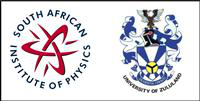Speaker
Abstract content <br> (Max 300 words)
Laser sources emitting in the 2 micron region is of particular interest for applications in medicine, remote sensing (LIDAR) and directed infra-red countermeasures. In addition, they are also desirable pump sources for efficient optical parametric oscillators operating in the 3-5 μm band as both the signal and the idler generated from 2 micron pump light can fall within the band. This is not the case with 1 micron pump sources used in the past.
However; while solid state laser sources in the 1 micron region (Neodymium based lasers) are well established, sources in the 2 micron region are still maturing.
Ho:YAG based solid-state lasers pumped with Thulium-doped fibre lasers has been a popular approach for several years to generate coherent light at 2 micron, delivering high average powers and good optical-to-optical efficiencies, while Ho:YLF was used for low pulse repetition frequency Q-switched applications due to its long upper state lifetime. Ho:YLF had more limited use in high average power applications as it was believed that the low thermal fracture of YLF would pose a problem.
In this paper we present a comparison between Tm:fiber laser pumped Ho:YAG lasers published in literature and several Tm:fiber laser pumped Ho:YLF lasers we developed. It is shown that Ho:YLF based lasers can deliver high average powers and optical-to-optical efficiencies, comparing favourably to Ho:YAG lasers. The best performing laser delivered an average power in excess of 45 W with an optical-to-optical efficiency of 53 %, in a near diffraction limited beam.
Level for award<br> (Hons, MSc, <br> PhD)?
PhD
Apply to be<br> considered for a student <br> award (Yes / No)?
Yes
Would you like to <br> submit a short paper <br> for the Conference <br> Proceedings (Yes / No)?
No
Main supervisor (name and email)<br>and his / her institution
Dr. M.J. Daniel Esser, desser@csir.co.za, CSIR National Laser Centre

